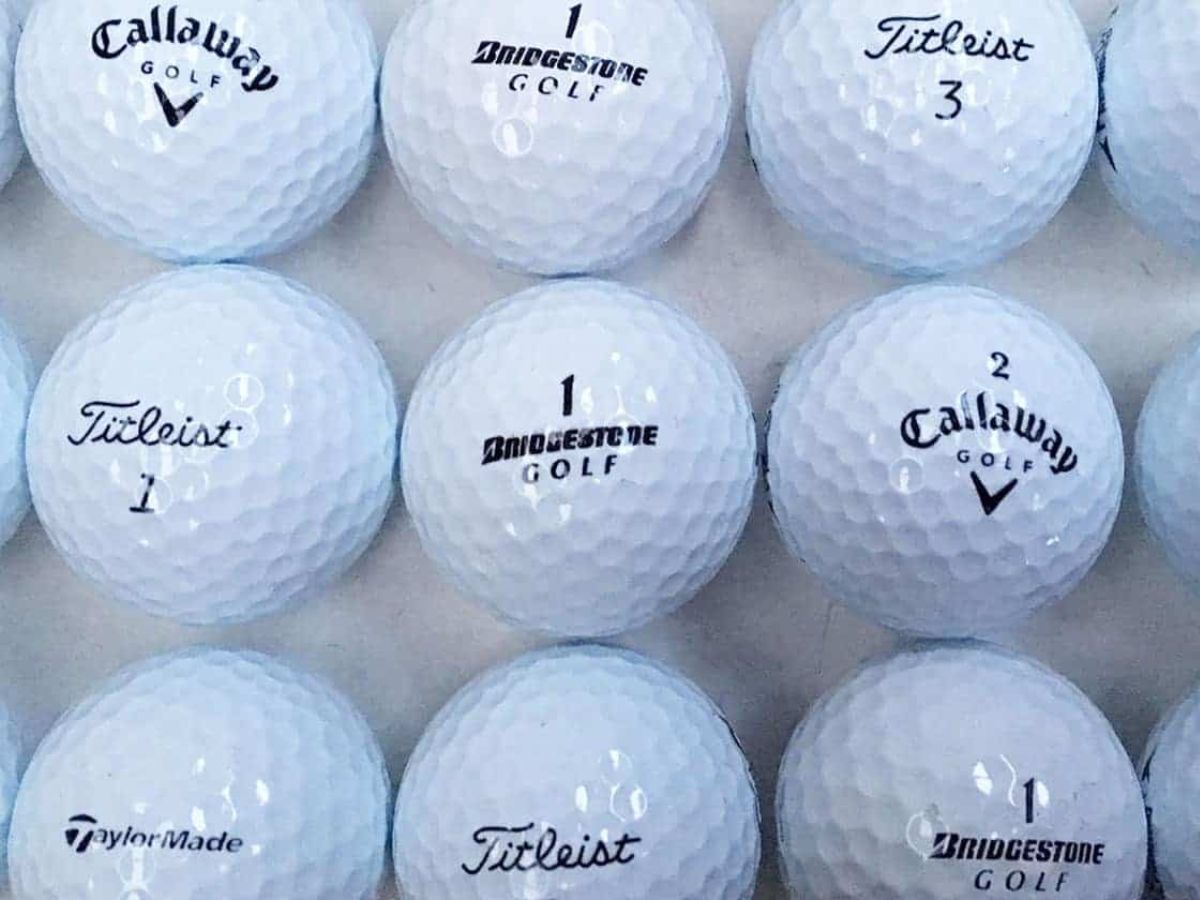Do you have a good understanding of the golf or range balls in your bag or bucket? Golfers invest a significant amount of money annually on golf balls, yet often lack an understanding of the technology or symbols on them. Have you ever come across a stray golf ball on the course and wondered if it’s worth using?
Golf balls are available in different colors and feature logos and numbers printed on them. All the information about a piece of golf equipment is contained in the numbers on the golf ball. Can you explain the reason behind Titleist golf balls having red numbers on some and black numbers on others?
This article covers the different numbers found on golf balls and the different types available. You can tell the age of a golf ball by looking at its numbers, as golf ball designs have evolved over the years. By the end of this article, you will be able to confidently communicate about golf balls.
What Do the Numbers on Golf Balls Mean?
A golf ball features three distinct types of numbers. Numbers ranging from single digits to three digits. Every type serves a specific purpose and communicates a unique message regarding the ball you’re going to hit.
One Digit Numbers on Golf Ball
The single-digit numbers on the golf ball are the easiest to understand. These markings make it easy for you to spot your golf ball and are situated right below the brand name. For example, if you play different numbers in your group of four, you can all opt for Callaway golf balls. Play Callaway 2 with a friend and Callaway 4 with another friend. This single number prevents you from playing the wrong ball.
According to golf rules, it’s recommended to use a unique marker on your ball for easy identification. Many professional golfers opt to use a permanent marker to add dots or a symbol that holds personal meaning. Based on the theory, two players could both have a Callaway 2, but their markings would be different.
Most golf balls typically feature numbers ranging from 1 to 4. Additionally, you can come across numbers containing up to nine single digits. Some brands use the color of the single-digit number to identify the model you are playing. The Titleist Pro V1 golf balls are considered the best available, incorporating this concept. If the single-digit number is black, you are playing a Pro V1; if it is red, you are playing a Pro V1x.
Two Digit Numbers on Golf Ball
You may observe various two-digit numbers, which can vary based on the brand and age of your golf ball. Manufacturers of golf balls have recently introduced the option for players to customize their balls when making a purchase.
Now available for purchase are golf balls with numbers from 1 to 99 for easy identification. One way to celebrate the memorable moment when you shot under 80 is by purchasing TaylorMade TP5 golf balls with the number 79 printed on them. Maybe you’d prefer a dozen Callaway cookies with your lucky number.

Another two-digit number you may notice on a golf ball is the compression rating. The hardness of the ball is determined by its compression rating – the softer the ball, the lower the compression value. To optimize the performance of your golf ball based on your swing speed, it’s important to compress the ball for maximum distance. Younger, stronger golfers tend to prefer balls with higher compression, while juniors and seniors may achieve more distance with reduced compression.
In the 1990s and early 2000s, golf ball manufacturers focused a lot on promoting the ball’s compression rating in their marketing efforts, but this emphasis has decreased over time. You can determine the compression rating of a ball by looking for a small 80 or 90 on its side. It suggests that the ball may be several decades old.
Check This One: How Do You Hit More Fairways And Greens? Try These Pro Tips!
Three-Digit Numbers on Golf Ball
Some avid golfers may not have come across a ball with a three-digit number before. While it’s not very typical, certain brands do specify the number of dimples on the golf ball. In case you’ve forgotten, dimples are the tiny cup-shaped indentations on the ball. They help golf balls fly straighter and stay in the air longer.
Typically, this number is in the 300s, but golf companies have tried various dimple designs over the years. If you need an example, consider looking for a Titleist Pro V1x from the mid-2000s. 332 dimples were imprinted on the side of that golf ball to show its design.
Other Factors to Check
Brand and Model
The brand and model name on a golf ball are like its identification label. Every brand provides a variety of models designed for different playing styles, swing speeds, and skill levels. Getting to know these differences will help you select a ball that suits your specific requirements while playing on the course.
Number of Layers
Golf balls may have two, three, four, or even five layers. Every layer plays a role in determining particular performance characteristics. Having more layers typically results in extra features like better spin separation, optimized launch conditions, and overall improved performance in various aspects of the game.
Cover Material
The type of cover used has a big impact on how the ball feels and how long it lasts. Urethane covers provide a soft feel and high spin, making them perfect for experienced players. Surlyn covers offer durability and a firmer feel, making them ideal for players who value longevity and consistent performance.

